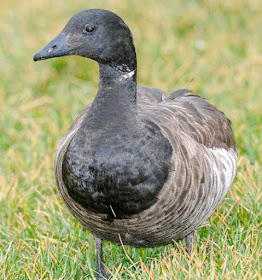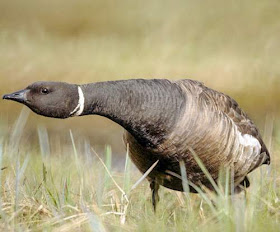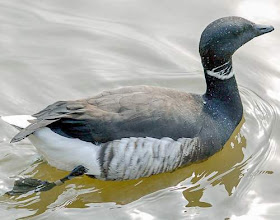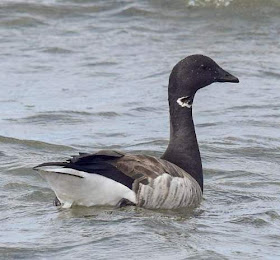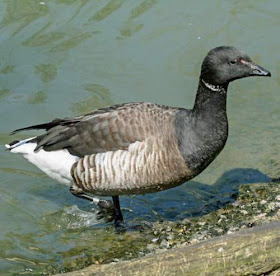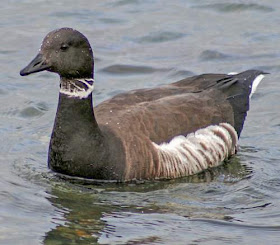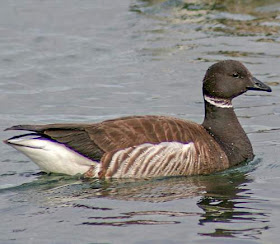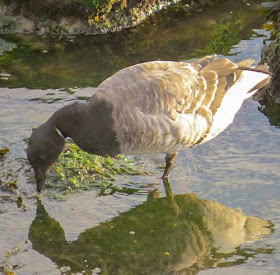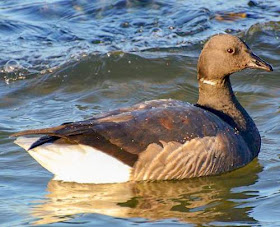Home › Plumbeous euphonia › Para oropendola - Psarocolius bifasciatus
Para oropendola (Psarocolius bifasciatus), also known as Olive oropendola, belongs to the family Icteridae.The Para oropendola species is endemic to Brazil and is found in the Amazon forests. The oropendola is a non-migratory resident birds. This oropendola species is monotypic.
| Key Facts | Description |
| Pictures of Para Oropendola | Distribution |
| Ecosystem & Habitat | Conservation |
Para oropendola - Description and identification
The Psarocolius bifasciatus species is a large oropendola measuring 45 to 55 cm in length and weighing 200 to 430 grams. The males are larger.These species have chestnut colored back, wings, flanks and belly. The head and chest are dark. There are yellowish outer rectrices. The facial skin is pinkish.
The black bill is stout, long, pointed with orange tip. The legs and feet are grayish. The irises are brown. The eye ring is pale gray. The call is a gurgling "stek-ek-ek-ek" sound.
 |
| 1.Para oropendola - Psarocolius bifasciatus Image by Francis de Laporte de Castelnau |
 |
| 2.Para oropendola - Psarocolius bifasciatus Image by Carol Foil |
Para oropendola - Geographical range and distribution
This oropendola species is endemic to Brazil and is found in the southern Amazon forest and the Amazon delta in the state of Para.Ecosystem and habitat
The Para oropendola species have high forest dependence. They normally occur in altitudes between 0 to 100 meters.The artificial ecosystems and habitats include plantations near the forests.The natural ecosystems and habitats of these species include tropical and subtropical moist lowland forests, tall broadleaf forests and tropical and subtropical moist swamp and estuarine forests.
Diet and feeding behavior
The diet of these species consists mainly of berries and fruits. Berries, fruits, insects and small vertebrates are their primary food.They are particularly adapted for feeding on the forest canopy. They feed alone or in pairs. Sometimes, they feed in small groups.
Reproduction and breeding habits
The breeding season of these species is during the month of February. They breed in small colonies.The nest is a long, hanging bag-like structure, built with plant fibers and vines. Not much is known about their reproductive and nesting habits.
Migration and movement patterns
The Para oropendola species are non-migratory, resident birds.Post breeding, the juveniles may disperse and establish in new locations within the range. Within their range they may make local movements for feeding and breeding.
Para oropendola - Quick Facts
- Scientific name: Psarocolius bifasciatus
- Species author: (von Spix, 1824)
- Synonyms/Protonym: Cassicus bifasciatus Spix, 1824
- Family: Icteridae › Passeriformes › Aves › Chordata › Animalia
- Vernacular names: English: Para oropendola, Chinese: 亚马孙拟掠鸟, French: Cassique du Para, German: Parástirnvogel, Spanish: Cacique de Pará, Russian: Амазонская оропендола, Japanese: チャバラオオツリスドリ
- Other names: Amazonian Oropendola, Olive Oropendola
- Distribution: endemic to Brazil
- Diet and feeding habits: fruits, nectar, insects, small vertebrates
- IUCN status listing: Least Concern (LC)
Para oropendola - Conservation and survival
The global population size of the Para oropendola (Psarocolius bifasciatus) has not been quantified. The overall population trend of the species is considered to be decreasing.In most of its range, this species is reported to be uncommon to rare. The generation length is 4.6 years. Its distribution size is about 178,000 sq.km.
Ecosystem degradation, ecosystem conversion and deforestation are the main threats that may endanger the survival of the species.
IUCN and CITES status
The Para oropendola (Psarocolius bifasciatus) species does not approach the thresholds for being Vulnerable either under the range size criterion or under the population trend criterion or under the population size criterion.The IUCN (International Union for Conservation of Nature) has categorized and evaluated the species and has listed it as of "Least Concern (LC)".
The CITES (Convention on International Trade in Endangered Species of Wild Fauna and Flora) status is ‘Not Evaluated’ for the Para oropendola (Psarocolius bifasciatus).
1.Para oropendola image source: https://en.wikipedia.org/wiki/File:Psarocolius_(bifasciatus)_yurucares_-_Castelnau.jpg
Image author: Francis de Laporte de Castelnau | Public domain
2.Image source: https://www.flickr.com/photos/dermoidhome/3781548597
Image author: Carol Foil | License: CC BY-NC-ND 2.0 as on 1/18/19
Link to Creative Commons copyright licenses
Updated Jan 18, 2020
Recently updated and current topic in Bird World: Para oropendola (Psarocolius bifasciatus).














